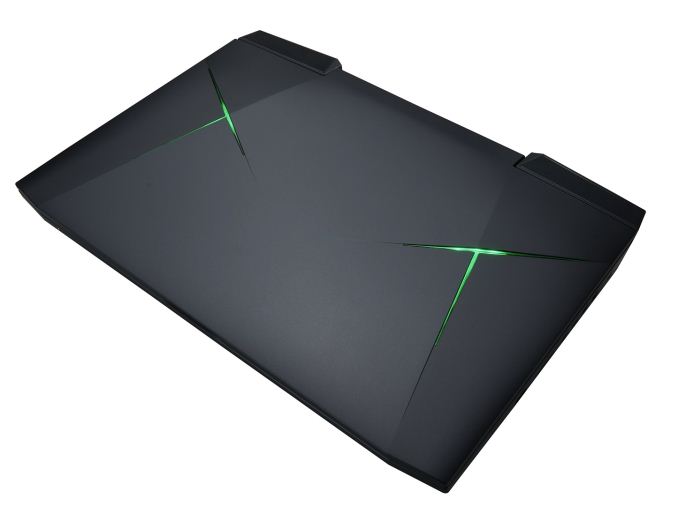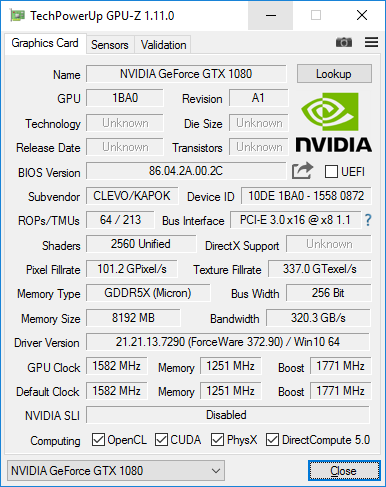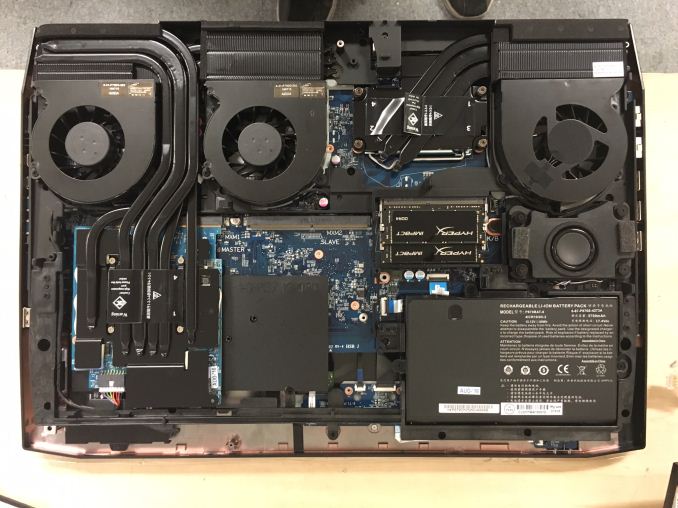09:51AM EDT - We're readying up for a Live Blog of the Microsoft event in NYC. Panos Panay is expected to take to the stage, with Major Nelson from the Xbox team in tow (we believe) for some new announcements. The presentation is set to start at 10am ET, and we'll fire up the Live Blog as it starts!
09:54AM EDT - Less than 10 minutes to go
09:55AM EDT - Apparently MS are doing hospitality right for press attending the event direct. Power, USB power, ethernet cables and USB-to-Ethernet adaptors.
09:55AM EDT - That sets a high bar
09:56AM EDT - Last year, the event WiFi was continually breaking - so there are provisions this time for the media
09:56AM EDT - Some rumors abound that there will be hardware announced
09:57AM EDT - We've heard lots about potential specifications, but there's been a lot of chatter and not all of it entirely clear. Will wait until the announcements on stage for confirmation

10:01AM EDT - For anyone wanting to watch the stream direct, http://news.microsoft.com/microsoft-event-2016/#MTbRsTKvwepxdAGW.97
10:01AM EDT - And it begins, with a video

10:02AM EDT - 'New experiences'
10:02AM EDT - 'Blind mode to help programming for accessibility'
10:03AM EDT - 'everyone can participate'
10:03AM EDT - Terry Myerson on stage

10:04AM EDT - 'Each of us gets to reap the benefits of technology'
10:04AM EDT - 'We challenge our employees to deliver on our mission to empower every person and every organization'
10:04AM EDT - 'Every user is multidimensional, multilayered'
10:05AM EDT - 'You might invent, you might create art, you might be a professional'
10:05AM EDT - 'We're inspired by every user with our products'
10:06AM EDT - A couple of case studies about the varied Win10 user base
10:07AM EDT - Pearson is using Hololens to train students

10:07AM EDT - 'We want Windows to be the place where you work and where you play'
10:08AM EDT - 'We've been continually updating Windows to protect your data and your identity'
10:08AM EDT - '200 billion hours logged on Windows 10'
10:09AM EDT - '15 months and 400 million users'
10:09AM EDT - Announcing next Win10 version, free for every Win10 device, in the Spring
10:09AM EDT - 'Win10 Creators Update'

10:10AM EDT - Three main areas
10:10AM EDT - #1 Mixed Reality - VR, AR, Holo
10:10AM EDT - #2 Gaming - In-game broadcasting and 4K
10:10AM EDT - #3 Social Connectivity
10:11AM EDT - 'Empowering everyone to be a 3D creator'
10:11AM EDT - 'Today, productivity is mainly 2D - spreadsheets, emails'
10:11AM EDT - 'Next generation is growing up with 3D'
10:11AM EDT - 'Moving and editing in 3D'

10:12AM EDT - 'Help users with 3D to accelerate creating and education'
10:12AM EDT - Basically, Minecraft is a big reference point
10:13AM EDT - Another video about creating/art in 3D


10:14AM EDT - Megan Saunders on stage

10:14AM EDT - 'We create to tell stories and solve problems'
10:14AM EDT - 'If we can unlock 3D creativity, we can unlock a new era of innovation'
10:14AM EDT - 'A new era of computing that enables everyone to achieve more'
10:15AM EDT - Announcing, '3D for Everyone'
10:15AM EDT - Another video
10:15AM EDT - A class handing out Surface Pro units to each student...

10:16AM EDT - I'm pretty sure there was a youtuber in the video for a second
10:17AM EDT - Scanning and importing 3D objects into an artistic program
10:17AM EDT - '80% of 12-24 believe creativity is one of the most important things'
10:18AM EDT - 'We want to enable them to connect their ideas to their screens'

10:18AM EDT - 'We want to make 3D creation as simple as taking a photo'
10:19AM EDT - 'Today is limited to taking photos and videos'
10:19AM EDT - Windows 3D Capture experience

10:19AM EDT - 'An app that lets you walk around something and it'll capture points of the object and save it as a model'
10:19AM EDT - Using HP Elite x3
10:20AM EDT - Now MSPaint
10:20AM EDT - 100m users every month
10:20AM EDT - 'Paint was the first digital arts package most people used'
10:20AM EDT - Announcing with the update: Paint 3D

10:21AM EDT - Common scenario in Paint is cropping
10:21AM EDT - Turing a crop into a 3D memory

10:21AM EDT - The scanned sandcastle is now an object in Paint 3D

10:22AM EDT - Moving objects into the right depth of the image
10:22AM EDT - Remix3D.com - a community for Paint 3D
10:23AM EDT - Take objects out of minecraft and place into Paint 3D or 3D print them
10:23AM EDT - Import objects from SketchUp

10:24AM EDT - 'Boards' allow saving objects across the community into groups

10:25AM EDT - Adding various objects to the 3D scence
10:25AM EDT - Doodle takes any 2D sketch and turns it into 3D
10:26AM EDT - Creating personal 3D emojis
10:26AM EDT - All the 2D pens and pencils work on any 3D object

10:27AM EDT - Sticker tool takes any 2D image and stamps it onto a 3D image
10:27AM EDT - Direct publishing to the community / facebook
10:28AM EDT - '3D accelerates comprehension'
10:28AM EDT - 'Over the next year, 3D will be implemented into most MS applications'
10:28AM EDT - Powerpoint demo
10:29AM EDT - Added 'Insert 3D model' to Powerpoint

10:29AM EDT - 'With 3D, can change perspective and scale/orientation on the fly'
10:29AM EDT - Also, animation
10:30AM EDT - also, 3D transitions
10:30AM EDT - mix and match 2D/3D content
10:31AM EDT - 'Taking 3D content and breaking it from the screens with Hololens'
10:32AM EDT - 'Edge will fully embrace 3D'

10:32AM EDT - 'Edge and Hololens will allow for mixed reality'

10:33AM EDT - 'Sandcastle back on stage as a hologram'
10:33AM EDT - Houzz users can use Hololens to preview products in their home before they buy


10:34AM EDT - 'Knowing that the chair will fit'
10:34AM EDT - A set of VR accessories coming to the PC
10:35AM EDT - 'VR spaces'
10:35AM EDT - '2D in a VR environment

10:36AM EDT - Changing the VR space to Rome with HoloTour

10:37AM EDT - This space is interactive
10:38AM EDT - Terry back on stage
10:38AM EDT - 'MS' partners will be shipping VR headsets'
10:39AM EDT - each headset will be 6DOF
10:39AM EDT - starting $299

10:39AM EDT - '3D for everyone'
10:39AM EDT - Now gaming
10:40AM EDT - Video of League of Legends championship
10:40AM EDT - 'Gamers are spending 2x time watching people over playing themselves'
10:41AM EDT - 'Microsofts long term commitment to gaming'

10:41AM EDT - Win10 is geared towards eSports and broadcasting
10:42AM EDT - Jenn McCoy from the Xbox Team on stage
10:42AM EDT - Three announcements for gamers

10:43AM EDT - Game Broadcasting in W10
10:44AM EDT - 'Broadcasting can be intimidating to set up'
10:44AM EDT - 'Creator's Update brings Broadcasting direct into Windows'
10:45AM EDT - Win+G then click to broadcast to Beam

10:45AM EDT - 'Virtually no lag'
10:46AM EDT - 'Xbox Live tells my friends I'm broadcasting'
10:46AM EDT - Now custom tournaments
10:47AM EDT - Announcement: With the update, players can create custom tournaments with Arena on XBL
10:48AM EDT - 'Arena does the tracking for you'

10:49AM EDT - The service will take the admin out of the equation
10:49AM EDT - Doesn't matter which device is used
10:50AM EDT - 'Xbox One S outsold other consoles in prominent markets for 3 months'
10:50AM EDT - Running Forza on a 4K HDR display... just running
10:50AM EDT - Reiterating Xbox Anywhere
10:51AM EDT - Using Xbox One S to watch 4K content
10:51AM EDT - Announcement: Bitstream audio passthrough with Dolby Atmos support on BluRay is coming with the Update

10:52AM EDT - Terry back on stage
10:52AM EDT - 'Magic happens when we collaborate'
10:52AM EDT - 'People today are confined with the specific app they use'
10:53AM EDT - Allison O'Mahoney on stage
10:53AM EDT - 'People are at the center of Windows'
10:53AM EDT - 'What started with email is now a patchwork of apps and services'
10:54AM EDT - 'Growing social networks comes at a cost - complexity'
10:54AM EDT - 'Most interactions are with a few key individuals'
10:54AM EDT - 'What would it mean to prioritize the important people when we collaborate'
10:55AM EDT - A faster way to share with a few key people, basically
10:55AM EDT - Creator's update allows users to drag content to an icon on the screen to share it to a person
10:56AM EDT - 'Windows apps will understand the context of important people'
10:57AM EDT - 'It's all too easy to miss communications from the important people'
10:57AM EDT - Update will bring multiple communication programs together and prioritize the important people
10:57AM EDT - E.g. Skype, Mail, XBL, Skype for Business

10:58AM EDT - 'cut through the noise so you never miss a moment'
10:59AM EDT - Win10 introduces shoulder taps
10:59AM EDT - Basically, sharing emoji with important people
10:59AM EDT - Remember when MSN had the 'buzz' feature? Feels like that a bit

11:01AM EDT - That's it for the Creator's Update. Due Spring, early builds for insiders this week
11:01AM EDT - Now onto hardware and devices
11:02AM EDT - 'It's all about the creators at any price point in any form factor'
11:02AM EDT - 'Achieving potential
11:02AM EDT - 'Opportunities arise with new form factors'
11:03AM EDT - 'Device and software has to work perfectly'
11:03AM EDT - Panos Panay on stage
11:04AM EDT - Video about inspiration through creation

11:05AM EDT - 'Creating Surface on a Surface'
11:05AM EDT - 'The products are meant to be seamless in your life'

11:06AM EDT - 'Surface Pro 4 versatility'
11:07AM EDT - Surface Pen is like a Basketball - intuitive
11:07AM EDT - 'Users who grew up on pen and paper are creating again with Surface'
11:08AM EDT - 'The 'which device do I need' question has disappeared with the 2-in-1'
11:08AM EDT - Last year was the Surface Book

11:09AM EDT - Surface has highest user satisfaction from any laptop device
11:09AM EDT - *Surface Book
11:10AM EDT - 'Kids don't need paper and pencil to share'
11:11AM EDT - 'Gamers want more frame rate'
11:11AM EDT - 'Engineers don't want lag'
11:11AM EDT - Everyone asks for battery life
11:12AM EDT - 'Took Surface Book i7, then added more, in the same chassis'
11:12AM EDT - video
11:13AM EDT - Has 2x graphics power

11:13AM EDT - so GTX 1060?
11:13AM EDT - 1.9 TFLOPs
11:14AM EDT - Updated CPU
11:14AM EDT - More than just dropping in a new processor
11:14AM EDT - Surface Book needs to be proud to hold
11:14AM EDT - Added second fan to give better performance longer
11:15AM EDT - More batteries too
11:15AM EDT - 16hr battery life
11:15AM EDT - Per weight, most powerful laptop
11:15AM EDT - Oct 26th $2399 preorder, Avail november

11:16AM EDT - Surface Pro 4 from $899, Surface Book from $1499
11:16AM EDT - New product
11:17AM EDT - Time to announce, the....
11:17AM EDT - 'it takes everything one step further'
11:17AM EDT - 'Looks familiar, but feels different'
11:17AM EDT - Surface Studio
11:18AM EDT - An all-in-one ?
11:18AM EDT - 28-inch

11:18AM EDT - LCD display
11:18AM EDT - 270W
11:18AM EDT - Quad core i7
11:18AM EDT - 32GB DDR4, GTX 980M, 2TB PCIe SSD
11:19AM EDT - also, Surface dial, like a BMW thing


11:20AM EDT - 'Thinnest LCD'

11:20AM EDT - 'Build for professionals'
11:20AM EDT - Basically aimed square at the iMac
11:20AM EDT - 3:2 Aspect Ratio
11:21AM EDT - Fully Alu enclosure
11:21AM EDT - 12.5mm thin touch screen
11:22AM EDT - 13.5 million pixels (4500x3000)
11:23AM EDT - 'TrueColor'

11:24AM EDT - Color calibrated
11:24AM EDT - Different color modes for DCI-P3 and sRGB
11:25AM EDT - switch on the fly
11:25AM EDT - 192 PPI

11:27AM EDT - Can scale two full 8.5x11 pages on the screen
11:27AM EDT - 'True Scale: one inch on the display is one inch in real life'
11:28AM EDT - Hardware in the base
11:28AM EDT - Also, quiet acoustics
11:28AM EDT - and visually quiet
11:29AM EDT - Chrome arms are designed to 'disappear' from the look
11:29AM EDT - Three fans
11:30AM EDT - Xbox controller protocol
11:30AM EDT - No TB3, No USB 3.1
11:30AM EDT - Cable is fixed into the device
11:31AM EDT - Linear microphone array on the top of the display
11:33AM EDT - Surface Studio HD Camera
11:33AM EDT - Auto exposure
11:33AM EDT - Windows Hello
11:33AM EDT - 'We think you're going to love it'
11:33AM EDT - 'Performance is unmatched'
11:33AM EDT - So
11:33AM EDT - Price?
11:33AM EDT - CPU?
11:34AM EDT - 'Studio is category defining product'
11:34AM EDT - *a
11:37AM EDT - Now a video






11:39AM EDT - Pen support
11:39AM EDT - 'Turns a desk into a studio'
11:40AM EDT - 'Moving effortlessly between typing and drawing/annotating or other apps'

11:40AM EDT - 'Zero-gravity hinge that is weightless'
11:40AM EDT - 'Counter spring system for any angle'
11:41AM EDT - Surface Pen now

11:41AM EDT - Real time editing with the pen
11:42AM EDT - 'Putting it down to paper, it's a full sheet of paper on display with Truescale'
11:42AM EDT - Can lean right up to the screen

11:42AM EDT - 'Being able to write at full speed'
11:43AM EDT - 'So you feel the ink leaving the pen instantly'

11:44AM EDT - Interesting image on display
11:44AM EDT - Now Surface Dial

11:45AM EDT - Integrated global controls
11:45AM EDT - Dial on the display
11:45AM EDT - Like BMW's console thing?
11:47AM EDT - Madefire CEO on stage, creates 'Emotion books'
11:48AM EDT - 'It's important to __have a digital workflow'


11:49AM EDT - 'Before it was writing in word, printing, draw, scan, rewrite, reprint, etc'
11:49AM EDT - 'Studio makes it seamless'
11:51AM EDT - Even from here, there's *some* lag in photoshop
11:53AM EDT - Demo of an emotion book on Madefire
11:54AM EDT - Panos on the stage again
11:55AM EDT - Video about uses
11:57AM EDT - In the video, the Dial gives the users a claw grip. That could cause cramp over time?
11:58AM EDT - Preorder today from $2999
11:58AM EDT - Available limited quantities in Q4
11:59AM EDT - Satya Nadella on stage

11:59AM EDT - 'Taking software, hardware and birthing new computer experiences'
11:59AM EDT - 'Creating a new platform of opportunity'
12:00PM EDT - 'Last 10 years __have had a lot of new and innovative devices'
12:00PM EDT - 'Most innovation has been slanted towards consumption'
12:01PM EDT - 'At MS, our mission is to empower everyone to achieve more'
12:01PM EDT - 'Finding the balance between consumption and creative expression'
12:02PM EDT - 'The future about computers and computing is about this generation, the Minecraft generation'
12:02PM EDT - 'We're building Windows for each of us'
12:03PM EDT - 'Surface is creating new categories to turn the desk into a studio'
12:03PM EDT - 'Windows with Office, Windows with Gaming, as cloud supported AI accelerated experiences'
12:08PM EDT - Now an outro video. Looks like that's a wrap after two hours...




























































